
Julio Vila y Prades (9 April 1873, Valencia - 9 July 1930, Barcelona) was a Spanish painter and muralist who also worked throughout Latin America.

Julio Vila y Prades (9 April 1873, Valencia - 9 July 1930, Barcelona) was a Spanish painter and muralist who also worked throughout Latin America.

Against his parents wishes, he began his artistic studies at the Real Academia de Bellas Artes de San Carlos with Francisco Domingo Marqués and Joaquín Agrasot. He then went to Madrid and was an assistant in the workshop of Joaquín Sorolla from 1893 to 1904. [1]
He was a frequent participant at the National Exhibition of Fine Arts, where he took honorable mention in 1892 and 1897 and won a medal in 1904 for his painting, On Rice. [1] That same year, he went to Paris and spent a short time studying at the Académie Julian.
Expressing a desire to visit South America, his friend Sorolla contacted the Catalan businessman and art promoter, José Artal (1862-1918), who was based in Buenos Aires. [2] With his support, Vila went to Argentina, where he painted landscapes and genre scenes on the pampas. He returned to Europe in 1906, spending some time in Brittany, then visiting Madrid, where he made drawings at the wedding of King Alfonso XIII.
In 1908, following the death of his mother, he went back to Buenos Aires and married José (soon to be "Count") Artal's daughter, Carmen, who was fifteen years his junior. Over the next few years, he travelled throughout Argentina, receiving several commissions for decorative works, including the ceiling at the Tigre Club, and murals at the Plaza Hotel and the Tucumán Government Palace. [1] He also produced numerous portraits.
Plans to move to Paris were quashed by the beginning of World War I and his family settled in San Sebastián instead. He continued to travel, however, working in New York, Havana, Caracas and Mexico City. [2] He returned to Spain in 1921 and painted the ceiling of the new Gran Kursaal de San Sebastián (since demolished). [1] After that, he went to Peru, to do on-site sketches for a mural of the Battle of Ayacucho, to be placed in the new Bolivarian Museum in Caracas. [2] The year 1924 found him in San Francisco, painting a ceiling mural, The Apotheosis of the California Soldier, for the theater at the Legion of Honor museum. [3] : 95
In 1928, he moved his workshop to Barcelona, so his wife could be closer to her family. That same year, the Peruvian government awarded him the Order of the Sun, although the mural that had been commissioned would remain unfinished at his death, two years later. [2]

Joaquín Torres García was a Uruguayan-Spanish artist who was born in Montevideo, Uruguay. Torres-García emigrated to Catalunya, Spain as an adolescent, where he began his career as an artist in 1891. For the next three decades, Torres-García embraced the Catalan identity and led the cultural scene in Barcelona and Europe. As a painter, sculptor, muralist, novelist, writer, teacher, and theorist, Torres-García was considered a "renaissance" or "universal man." He used a simple metaphor to deal with eternal struggles he faced between the old and the new, between classical and avant-garde, between reason and feeling, and between figuration and abstraction: there is no contradiction or incompatibility. Like Goethe, Torres-García sought to integrate classicism and modernity. Although he lived and worked primarily in Spain, Torres-García was also active in the United States, Italy, France, and Uruguay; he influenced European and North American and South American modern art.

Joaquín Sorolla y Bastida was a Spanish painter. Sorolla excelled in the painting of portraits, landscapes and monumental works of social and historical themes. His most typical works are characterized by a dexterous representation of the people and landscape under the bright sunlight of Spain and sunlit water.
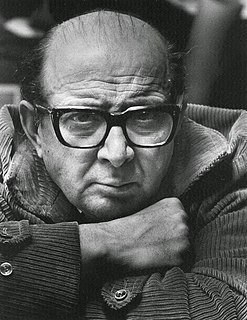
Delesio Antonio Berni was an Argentine figurative artist. He is associated with the movement known as Nuevo Realismo, a Latin American extension of social realism. His work, including a series of Juanito Laguna collages depicting poverty and the effects of industrialization in Buenos Aires, has been exhibited around the world.

Raúl Soldi was an Argentine painter whose work treated various subjects, including landscapes, portraits, the theater and the circus, and nature. His theatrical figures are renowned for their melancholy appearance. He also illustrated poetry books.

Félix de la Concha is a painter. Born in León, Spain, he resides in Pittsburgh and Madrid.
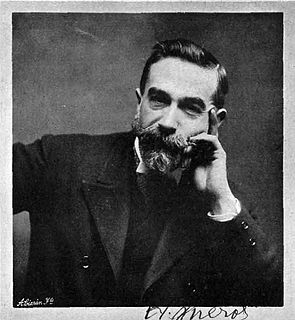
Agustí Querol i Subirats was a prominent Spanish sculptor, born in Tortosa, Catalonia, Spain.
Pedro Flores Garcia was a painter of the Region of Murcia, Spain.
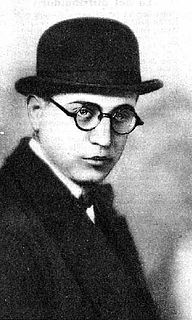
Francisco "Paco" Madrid was a Spanish (Catalan) journalist, writer and screenwriter.
Alfredo Da Silva was a painter, graphic artist, and photographer, known for his abstract expressionism. He came to international prominence in 1959 and remained so until his death in 2020.
Julio Mario Luqui-Lagleyze is an Argentine historian. Born in Buenos Aires in 1959 received a degree in History in 1982. He specializes in Hispano-American Military and Naval History and Military Museology. He is currently studying for his PhD in History at the Universidad Católica Argentina.
Luis Frangella was an Argentinian figurative post-modern painter and sculptor associated with the expressionist painting of the Lower East Side of New York City in the 1980s. He received a Guggenheim Fellowship in 1982. He died of AIDS in 1990.
Juan Ángel Michelena was a Spanish naval officer, he fought against the Royal Navy in Cape St. Vincent, and participated heroically in the defense and reconquest of Buenos Aires against the English invaders. He also served as Acting Governor of the city of Montevideo (Uruguay).
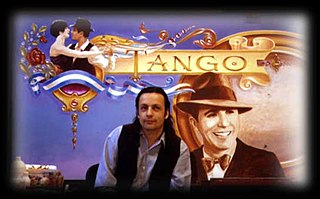
Jorge Muscia is a plastic artist and ‘fileteado’ instructor with over 30 years of experience in his field. Muscia, also known as the Fileteador of Tango, distinguishes himself for being a force in the revival of this old style of painting and for being a renowned instructor and promoter of the art of the filete in Argentina and the world.

Muu Blanco, is a multidisciplinary Venezuelan artist. He works in the plastic arts, performance, drawing, photography, electronic music, conceptual video, and handbag design. His compositions have been presented locally as well as internationally, including in cities like: New York City, Berlin, Miami, Barcelona, Bogota, Buenos Aires, London, Vancouver and Milan. His work has been regarded as a criticism to power, wealth and narcissism, as well as commentary on the urban landscape of modern Caracas.
Miguel Ángel Rojas is a Colombian conceptual artist born in Bogotá in 1946. His work includes drawing, painting, photography, installations and video and is often related to the sexuality, the marginal culture, the violence and problems involved with drug consumption and production.
Julio Uruguay Alpuy was an Uruguayan painter, sculptor, and muralist. During his early career, Alpuy was a part of the Taller Torres-García and the constructive art movement. While his early works were greatly influenced by Torres-García's theories about what he called Constructive Universalism, Alpuy drew from a wide variety of cultures and myths to create works that broke the boundaries of the constructive grid. Additionally, his studies in Europe and Latin America helped develop an interest in Cubism and myths that influenced later works. Even though Alpuy is not commonly known in the United States, he had a prolific career and his works are exhibited throughout the world.

Dumas Oroño was a Uruguayan artist, cultural manager, and teacher. His artistic work spanned several disciplines, including painting, engraving, ceramics, murals, and jewelry design.
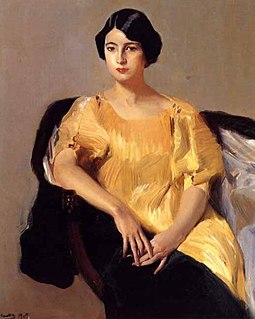
Elena Sorolla García was an early 20th-century Spanish sculptor and painter. She devoted her youth to sculpture, having a brief career that she left behind to dedicate herself to her family after marrying Victoriano Lorente in 1922. Most of her works are part of private collections, with the exception of some that belong to the Sorolla Museum. She was the youngest daughter of painter Joaquín Sorolla and curator Clotilde García del Castillo.
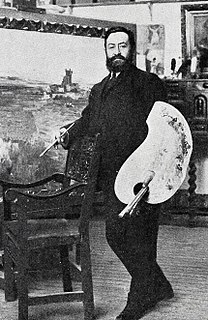
Marceliano Santa María was a Spanish painter, noted for his castilian landscapes, historical art and portraits.
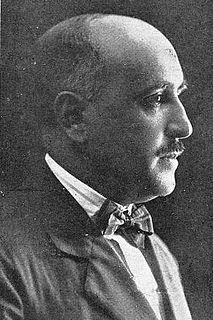
Francisco Llorens Díaz was a Spanish-Galician painter; best known for still-lifes and landscapes.
| Wikimedia Commons has media related to Julio Vila y Prades . |